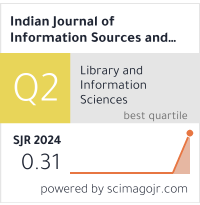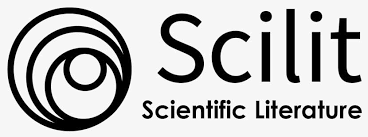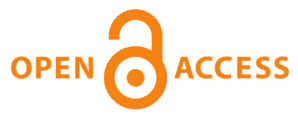Use and Awareness of Digital Information Resources (DIRS) By Undergraduate Students: A Survey of Government Degree College for Women Anantnag, Jammu and Kashmir
DOI:
https://doi.org/10.51983/ijiss.2019.9.1.604Keywords:
Digital Information, Digital Media, Information Literacy, Under-Graduate Students, Information Communication Technology (ICT), Library and Information Centres (LICs)Abstract
In the present age of information revolution and ever increasing demand for exact and consolidated information, the functions and old methods followed by traditional libraries are being replaced by new techniques and technologies. Providing access to information free of charge in electronic formats is a concept that is gaining momentum. Thus with the introduction of modern Information and Communication Technology (ICT), access to information is a precondition for becoming a knowledge society. The right of access to information has become the dominant right in the information and knowledge era. The research output from the universities and research centers need to be collated and disseminated to the information users and information generators. To, address this malady, the Information Literacy comes into picture, which is a set of abilities to recognize when information is needed and have the ability to locate, evaluate and use effectively the needed information. The paper attempts to investigate the Information Literacy levels among the Students of selected institute of higher learning. The survey method has been used, wherein a structured questionnaire was framed up to get the required data and analyzed vis-à-vis the objectives of the study. The major findings of the study reveal that majority of the students are not well versed the concept of information literacy.
References
American Library Association (ALA, 1989). Presidential Committee on Information Literacy. Retrieved on 25 September 2018 at http://www.emeraldinsight.com/journals.htm?issn=00242535&volume=54&issue=4&articleid=1502316&show=html#idbl
ACRL. (2000). Information Literacy Competency Standards for Higher Education. American Library Association. Retrieved on 26 September 2018 at http://www.ala.org/acrl/sites/ala.org.acrl/files/content/standard/.pdf
Bavakutty, M., & Nasirudheen, T. P. OF. (2008). Assessing Information Literacy Competency of Research students in India: A case Study. In ICOLIS 2008 held at Kuala Lumpur, 109-121.
Biradar, B. S., et al. (2010). Information Literacy Perception: A Study of Bioscience students of Kuvempu University. International Journal of Library Science, 2A(10), 1-15.
Davitt, Maughan, Patricia (2001). Assessing Information Literacy among Undergraduates: A Discussion of the Literature at the University of California-Berkeley Assessment Experience. College and Research Libraries, January, 65-71.
Dupuis, Elizabeth A. (1997). The Information Literacy Challenge: Addressing the Changing Needs of Our Students through our Programs. Internet Reference Services Quarterly, 2(2/3), 93-111.
Glister, P. (1997). Digital Literacy. New York, Wiley, 56-65.
Govt. Degree College for Women Anantnag. Retrieved from http://womencollegeanantnag.nic.in/
Hadimani, Manjunath B., Rajgoli, & Iqbal Ahmad U. (2010). Assessing Information Literacy Competence among the Undergraduate Students of College of Agriculture, Raichur: A Case Study. DESIDOC Journal of Library and Technology, 30(2), 70-78.
Issa et al. (2015). An Assessment of Information Literacy Competency of Undergraduate Students in University of IIorin, Kwara State, Nigeria. Annals of Library and information Studies, 62(2), 68-76.
Kemparaju, T. D. (2004). The Information Literacy Pry: A Case Study of Digital Libraries. SRELS Journal of Information Management, 46(2), 61-71.
Kim, J. Y., and Anderson, T. (2011). Reading across the Curriculum: A Framework for Improving the reading abilities and habits of College students. Journal of College Literacy and Learning, 37(2), 29-40.
Kour, P., Sohal, M. K., & Walia, K. (2009). Information Literacy Curriculum for Undergraduate Students. ICAL 2009. Library Services. Retrieved on 27 September 2018 at http://crl.du.ac.in/ical09/papers/indexfiles/ical-93_179_380-2-RV.pdf.
Mitterneyer, Daine & Quirion, Daine (2003). Information Literacy: Study of Incoming First-Year Undergraduates in Quebec. Retrieved on 29 September at http://works.bepress.com/karen_nicholson/s/
Parker, J. O. (2003). Putting the Pieces Together: Information Literacy at the Open University. Library Management, 24(4/5), 223-228.
Ranaweera, P. (2010). Information Literacy Programs Conducted by the Universities in Sri Lanka. Journal of the University Librarians Association of Sri Lanka, 14(1) 15-25. Retrieved on 29 Sept. Retrieved from http://www.sljol.info/index.php/JULA/article/view/2688/.
Tse, S. K., Lam, J., We. I., Westwood, P. S., & Lam, Y. R. (2005). Students test performance in PIRLS attitude to reading and reading self-concept across three ability groups: Data from Hong Kong. Australia Journal of Learning Disabilities, 10(1), 9-18.
Downloads
Published
How to Cite
Issue
Section
License
Copyright (c) 2019 The Research Publication

This work is licensed under a Creative Commons Attribution-NonCommercial-NoDerivatives 4.0 International License.









